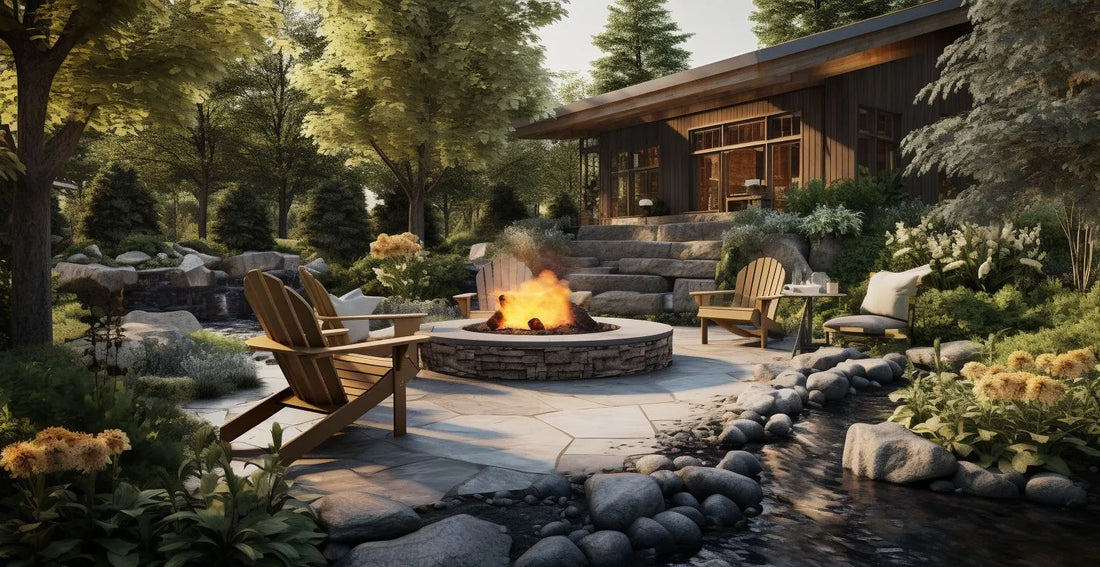
The Ultimate Guide to Zoning Your Outdoor Living Space
Share
Creating Perfect Zones in Your Outdoor Living Space
Transforming your outdoor area into a functional and beautiful extension of your home requires thoughtful planning and strategic design. The key to achieving a truly spectacular outdoor space lies in creating distinct zones that serve different purposes whilst maintaining visual harmony throughout. Whether you have a compact courtyard or an expansive garden, zoning allows you to maximise every square metre and create areas that cater to various activities and moods.
Understanding the Concept of Outdoor Zones
Outdoor zoning involves dividing your garden or patio into specific areas, each designed for particular activities or experiences. This approach creates structure and flow whilst ensuring your space remains practical and inviting. Rather than having one large, undefined area, zones allow you to establish intimate corners for quiet relaxation, vibrant spaces for entertaining, and functional areas for cooking and dining.
The beauty of zoning lies in its flexibility. You can create physical boundaries using furniture, planters, or decorative screens, or opt for more subtle divisions through changes in flooring materials, lighting, or plant arrangements. The goal is to establish distinct areas that feel purposeful without creating a fragmented or cluttered appearance.

Planning Your Zones Strategically
Before diving into the physical creation of zones, spend time observing your outdoor space throughout different times of day and seasons. Notice where the sun falls during morning coffee time, where evening shadows provide welcome relief, and which areas receive the most foot traffic. Understanding these natural patterns will inform your zoning decisions and ensure each area serves its intended purpose effectively.
Consider your household's lifestyle and preferences. Do you love hosting large dinner parties, or do you prefer intimate gatherings around a warming fire? Are you passionate about growing your own herbs and vegetables, or do you prioritise low maintenance landscaping? Your personal needs should drive the types of zones you create and their relative sizes within your overall space.
Think about the relationship between indoor and outdoor areas. Zones that connect naturally with your kitchen or living room will see more frequent use and feel more integrated into your daily routine. Creating smooth transitions between these spaces enhances the overall flow and makes your outdoor areas feel like genuine extensions of your home.
The Heart of Entertainment: Cooking and Dining Zones
The cooking and dining area often becomes the social hub of any outdoor space. This zone requires careful consideration of both functionality and atmosphere. Position your cooking area where it can serve multiple zones effectively whilst ensuring proper ventilation and safety clearances.
Modern outdoor cooking goes far beyond the traditional barbecue. Pizza ovens create a focal point that brings people together, offering the excitement of watching meals being prepared whilst providing exceptional cooking versatility. The radiant heat from a quality pizza oven extends the usability of your outdoor space well into cooler months.
When planning your cooking zone, consider storage for utensils, fuel, and ingredients. Built in solutions or weatherproof storage furniture keep everything organised whilst maintaining clean lines. Counter space adjacent to your cooking appliances makes food preparation more enjoyable and efficient.
The dining area should connect seamlessly with your cooking zone whilst providing comfortable seating for your typical group size. Choose furniture that withstands your local climate whilst offering comfort for extended periods. Consider how the space will look and feel both during intimate family meals and larger gatherings.
Creating Warmth and Ambiance: The Fire Zone
Nothing transforms an outdoor space quite like the addition of fire. Whether through a traditional firepit, a modern gas fire table, or an elegant fire bowl, flames create an irresistible gathering point that extends the outdoor season and provides a natural focal point for conversation and relaxation.
The fire zone serves multiple purposes throughout the year. During warmer months, it provides gentle ambient lighting and a psychological gathering point. As temperatures drop, it becomes essential for comfort, allowing you to enjoy your outdoor space well into autumn and winter months.

Position your fire feature where it can be enjoyed from multiple zones whilst ensuring adequate safety clearances from structures, overhanging branches, and neighbouring properties. Consider wind patterns to ensure smoke dispersal doesn't interfere with seating areas or neighbouring spaces.
Seating around fire features should encourage conversation whilst providing flexibility for different group sizes. Modular furniture arrangements work particularly well, allowing you to reconfigure the space for intimate couples' evenings or larger social gatherings.
Quiet Retreat: The Relaxation Zone
Every outdoor space benefits from a quiet zone dedicated to relaxation and contemplation. This area might feature comfortable lounging furniture, gentle water features, or simply a thoughtfully positioned bench with beautiful garden views.
The relaxation zone often works best when positioned away from high traffic areas and cooking zones. Consider natural windbreaks and privacy screening to create a sense of enclosure and intimacy. Fragrant plants and gentle water sounds enhance the sensory experience and promote relaxation.
Water features add tremendous value to relaxation zones. The sound of moving water masks unwanted noise whilst creating a calming atmosphere. Modern corten steel water features offer striking contemporary aesthetics that complement various garden styles whilst requiring minimal maintenance.
Buy Garden Water Features at Sal's Place
Defining Boundaries: Planters and Landscaping
Planters serve dual purposes in outdoor zoning, providing both physical division and opportunities for beautiful plantings. Large planters can create substantial visual barriers between zones whilst offering space for dramatic plantings or practical herb gardens.
Corten steel planters have become increasingly popular for their contemporary appearance and exceptional durability. The weathering steel develops a protective rust patina that stabilises over time, creating a warm, natural appearance that complements both modern and traditional garden designs.
Planters available at Sal's Place
Consider planting schemes that enhance each zone's purpose. Aromatic herbs near cooking areas provide fresh ingredients whilst releasing pleasant fragrances. Ornamental grasses and architectural plants create structure and privacy screens. Seasonal flowering plants add colour and interest throughout the year.
Lighting and Atmosphere
Proper lighting transforms outdoor zones from daytime spaces into magical evening environments. Layer different types of lighting to create depth and interest whilst ensuring safety and functionality.
Task lighting illuminates cooking and dining areas, making evening meals possible and enjoyable. Ambient lighting creates atmosphere and highlights key features. Accent lighting draws attention to plants, water features, or architectural elements.
Consider solar options for areas where electrical connections prove challenging. Modern solar lighting offers improved performance and attractive designs that integrate seamlessly into contemporary garden schemes.
Seasonal Considerations and Flexibility
British weather demands outdoor spaces that remain appealing throughout the year. Plan zones that offer shelter from rain and wind whilst maximising sunny spots during cooler months. Pergolas, gazebos, or substantial umbrellas extend the usability of dining and relaxation areas.
Choose materials and furniture that weather gracefully and require minimal maintenance. Quality outdoor furniture represents an investment that pays dividends in years of enjoyment and reduced replacement costs.

Bringing It All Together
Creating successful outdoor zones requires balancing individual area needs with overall design harmony. Repeat materials, colours, or plant types throughout different zones to maintain visual continuity whilst allowing each area to serve its specific purpose.
Remember that outdoor spaces evolve over time. Start with essential zones and add refinements as you discover how you actually use the space. The most successful outdoor living areas reflect their owners' genuine lifestyle needs rather than magazine perfect aesthetics that don't match real life patterns.
Your outdoor space should feel like a natural extension of your home, providing venues for cooking, dining, relaxing, and entertaining that enhance your daily life and create lasting memories with family and friends.











